Having a new baby is overwhelming. The joy, the anxiety, the love, the stress—and that’s just the emotional part of it—your body changes in some pretty significant ways during pregnancy, birth, and immediately afterward.
Plus, you know, you have a baby now. They need to be fed, loved, and cared for, but there’s a learning curve to having a new baby in your home.
So let’s take some of the guesswork out of it. Here’s an overview of what you can expect from both your baby and your body in the first few days postpartum.
Being born is quite an event for a baby. It takes some time to adjust to life outside of the womb. So what does that transition look like?
When your baby is born, they’re covered in amniotic fluid, blood, and vernix (a thick, creamy white substance). They may even look blue and mottled. This is totally normal.
As your baby starts breathing, their skin gradually becomes pink, though their hands and feet might be blueish for a few hours following their birth.
If your baby is born via vaginal delivery, expect that your baby’s head might be pointy or cone-shaped. That’s because it went through the narrow birth canal. Other unexpected features of newborn babies include:
These features will adjust over the following days and weeks, but don’t worry—you’ll think your baby is beautiful no matter what.
Cutting the cord! It’s a big moment for parents. But how do you treat the umbilical cord stump that remains?
The stump will gradually dry over the first days of your baby’s life, then turn black and fall off. In the meantime, keep the stump dry and clean. If the area around it looks red, sticky, or irritated, contact your baby’s healthcare provider.
Newborn human babies are unique for arriving to life earthside pretty helpless. Your baby’s vision will be limited to about 30 centimeters in front of them, which is about the distance from your chest to your face. (Also known as “cuddle distance.”) Anything beyond that will be blurry for a few months.
Fun fact: Your areola color will darken during nursing so your baby can locate their next meal!
However, if your baby’s vision isn’t strong yet, it can hear well. Because they’ve been able to listen to your voice since halfway through your pregnancy, they’ll recognize it immediately after birth. They may even be able to identify your partner’s voice if they spoke to your belly!
What’s more, your baby will be primed to listen for—and be calmed by—your heartbeat. After all, it’s a familiar and comforting sound to them after 40 weeks in your womb.
Let’s talk about comforting your newborn baby. Besides breastfeeding, skin-to-skin contact is one of the most effective ways of soothing your baby after being born by releasing oxytocin (the “love hormone”). It’s also essential for:
If you have a c-section, you can still do skin-to-skin after birth, but make sure to communicate your desire to do this to your healthcare team.
Most—though not all—babies are primed to nurse in the first hour after birth, otherwise known as the “golden hour.” This first nursing session can last up to an hour, sometimes longer.
Some babies will seek out the breast if you put them against your chest. Others may need a little help getting started. Don’t be shy about asking a lactation consultant for help.
The first breast milk your baby receives is colostrum. Colostrum is fantastic stuff. While you don’t produce a large amount, it’s just right for your baby’s tiny stomach, and it’s perfectly formulated to meet your new arrival’s needs. Colostrum does the following:
Besides the benefits mentioned above, your colostrum performs another role: it helps your baby pass their first poop. Otherwise known as meconium, this poop is black and sticky and made up what your baby ingested while in utero. This can help prevent jaundice in your baby.
Newborns tend to be pretty sleepy for the first few weeks of life. It’s recommended that they sleep between 14-17 hours, usually in 3-4 hour stretches. Safe sleep is critical, but especially so during this time. Make sure your baby:
Most newborns feed at least every 2-4 hours, or 8-12 times every 24 hours. That being said, they can feed even more often, especially as they undergo growth spurts. This includes nighttime feedings. Until your baby has regained their birth weight, it’s necessary to wake them at night for feeding.
Parents, we know it’s easy to get wrapped up in everything you need to know about your baby’s first weeks. But you’re important, and there’s a lot to know about your recovery from pregnancy and birth.
Once you’ve delivered your baby, you’ll also deliver the placenta. This can take anywhere from 5-20 minutes and may be accompanied by mild contractions. If you’ve had a c-section, your doctor will remove the placenta during the procedure.
After your placenta has been delivered—and your midwife or doctor has confirmed the placenta is in one piece—you may receive what’s known as a “fundal massage.” Your healthcare team performs fundal massages to help your uterus contract and prevent postpartum hemorrhaging.
While not exactly comfortable, they’re a preventative measure—postpartum hemorrhage is the primary cause of almost one-fifth of maternal deaths worldwide, according to the World Health Organization. What’s more, breastfeeding can aid with this by creating uterine contractions that guard against hemorrhage.
After giving birth, parents frequently experience swelling in their hands or feet. This is due to hormonal shifts but can be exacerbated if you received IV fluids during induction and/or a C-section.
And speaking of hormonal shifts: hot flashes and night sweats. They’re not just during menopause—they’re common after giving birth.
After a vaginal birth, your labia, vulva, and perineum may be sore, painful, or swollen. If you’re experienced tearing or an episiotomy, even more so. To promote recovery, make sure to take it as easy as possible.
If you have stitches in your perineum, they’ll dissolve in a few weeks. In the meantime, wash as usual and gently dry. Using a squirt bottle with warm water or a sitz bath can be helpful. Eating a high-fiber diet and staying hydrated can help prevent constipation and straining while on the toilet.
If you’re experiencing ongoing pain, contact your healthcare provider about options for pain relief.
When it comes to nursing after vaginal birth, many parents find they have sore bottoms from their delivery. A side-lying breastfeeding position can be a more comfortable option!
Having a C-section is major surgery. Because of that, you should expect to have a more extended hospital stay than a vaginal birth—typically between 2-3 days.
Your incision site will be painful for several weeks, if not longer. Follow your aftercare instructions closely to promote healing. While many parents worry that a C-section will impact their ability to hold and interact with their baby, this usually isn’t the case. However, it’s a good idea to work with a lactation consultant to find the most comfortable positions for nursing your baby.
IBCLC tip: The football hold is an excellent position for breastfeeding following a C-section.
Most women still look pregnant after having their baby. You lose between 6-13 pounds right after labor, but your body needs time and recovery before it returns to your pre-baby shape.
And let’s be fair to ourselves—a lot of pressure is put on women to get back to their pre-baby bodies. But why? Focus on healing, feeling good, and loving on your baby right now. Rushing back into a fitness and diet routine will delay your recovery and add stress to your life.
Following delivery, you’ll experience bleeding known as “lochia.” Lochia is similar to a very heavy period, at least in the first 24 hours. Many parents are surprised at the clotting passed during this time—up to a golf ball size can be normal.
Lochia bleeding can continue for between 4-6 weeks postpartum.
Even after giving birth, you’re not done with contractions. Contractions will continue for as long as it takes for your uterus to return to its normal size. These cramps may intensify as you breastfeed, thanks to the muscle-contracting power of oxytocin.
There are a lot of changes to your body postpartum, especially when it comes to your breasts. Even if you decide not to breastfeed, your breasts will still undergo a lot of changes.
For breastfeeding parents, initiate breastfeeding as soon as possible after giving birth. It calms and nourishes your baby, but it also helps get your milk supply established.
Your breasts will first produce small amounts of colostrum. (See above!) As your baby nurses (and nurses and nurses), your breastmilk will shift to transitional milk. And as this happens, your breasts will become engorged—swollen, hard, sore, and full of milk. Engorgement can be pretty uncomfortable, especially for new parents who haven’t experienced it before.
You can help relieve the discomfort through breast massage, warm compresses, showers, and continuing to nurse your baby. If you’re experiencing leaking, breast pads are an excellent way to prevent your top from getting soaked.
Another point to remember about the early days of breastfeeding: While breastfeeding itself shouldn’t be painful, your nipples may need to adjust to this new activity. Soreness and cracking aren’t uncommon. Nipple ointment can soothe the pain, and make sure to let your nipples air dry after showers and nursing.
After navigating the hormonal shifts during pregnancy, you may have been thinking your hormones would even out after you gave birth. You may have to wait a while longer, though, because your body is about to go through some significant hormonal shifts.
When your baby is born, your placenta is also delivered. During pregnancy, your placenta flooded your body with progesterone and estrogen. Those hormone levels drop abruptly after birth.
On the other hand, levels of oxytocin surge following delivery, which compensates somewhat for the plummeting progesterone and estrogen. Oxytocin also helps you bond with your baby and plays a significant role in breast milk production.
And speaking of breast milk, your body will also start producing more prolactin as your milk supply is established.
The shifts in hormone levels can leave new parents feeling sad, weepy, or moody but typically resolves within a few weeks. But it’s essential to pay attention to your mental and emotional well-being during this time.
For 20-25% of parents, perinatal mood disorders are a reality. Pay attention to the following symptoms:
Perinatal mood disorders can be scary, but they’re very treatable. If you’re experiencing any of the above symptoms, talk to your healthcare provider.
The first days, weeks, and even months of parenthood can be overwhelming. While we can’t help with everything, we can help you get the most out of your breastfeeding journey. Book a convenient online video appointment with a Nest Collaborative IBCLC today.
